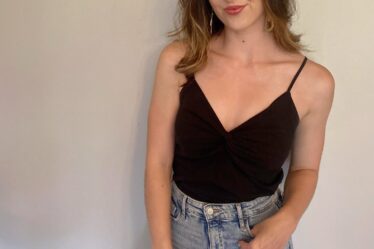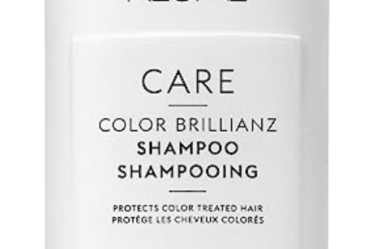
PARIS — “Playing it safe can cause a lot of damage in the long run.” The notion — one of Jenny Holzer’s “Truisms” — was in my thoughts throughout the Paris Fashion Week that closed on a cheerful note on Tuesday at Disneyland Paris, of all places, with another inconsistent Coperni show wrapped in charming, media-friendly theatrics. This was a “playing it safe” season, and it is not difficult to understand why: demand for luxury goods has plunged. Part of the problem is macroeconomic, but there may be more going on under the surface and nobody seems to know quite what to do about it.
Sticking to the known might seem the safest approach. And yet, to quote Balenciaga designer Demna “Fashion cannot be based on fear, otherwise it is useless.” Many of the industry’s biggest success stories are rooted in creative risk-taking. Case in point: when Alessandro Michele debuted his hodge-podge, vintage-inflected, deliberately ambiguous and costumey vision at Gucci back in 2015, it was a shock that helped sales soar.
Seeing the same aesthetic in Michele’s runway debut for Valentino last Sunday — almost identical, truth be told, save for the higher level of execution — left me with mixed feelings. Deja-vu was the first: dangerous, but then again look at the success Hedi Slimane has built from a singular vision, although Hedi actually evolves depending and where he goes — and judging from the stellar 1960s-perfumed Celine collection he presented via video (his last for the house), he wants to be at Chanel.
Thereafter, there is the matter of authorship, and the stubbornness of being consistent to one’s vision: Alessandro Michele is Alessandro Michele — “I can’t help being myself,” he said backstage — no matter the house he inhabits. Whether this is sound strategy or self sabotage is anyone’s guess. And this leads us to the wider question of brand identity. To what degree does it still matter? Is a maison a shell with a name to be filled with new content with each designer that inhabits it or does heritage take precedence? There were a lot of archive replicas at Valentino, even though the crazy mix made them look like wilted vintage finds. Finally, there is the matter of business strategy: is it possible to replicate the remarkable success story of Michele’s Gucci by hiring the same designer? Only time will tell. For now, what’s clear is that the collection lacked novelty and lightness. It looked overdone, and verbose. It would be stimulating to see Michele daring to do less.
Demna, another bearer of a deeply steeped point of view prone to repetition, seemed to chart new waters over at Balenciaga. The show’s opening, lingerie-inspired section looked like a farcical take — sardonic humor is Demna’s forte — on Dolce & Gabbana’s boudoir mistress, and seemed to announce change, but things soon reverted back soon to the house’s now-trademark brutalist volumes and grotesque gracelessness. The outing was one step forward, two steps back (but did come with some inventive engineering: the neck corsets and snap bustiers looked genuinely forward thinking).
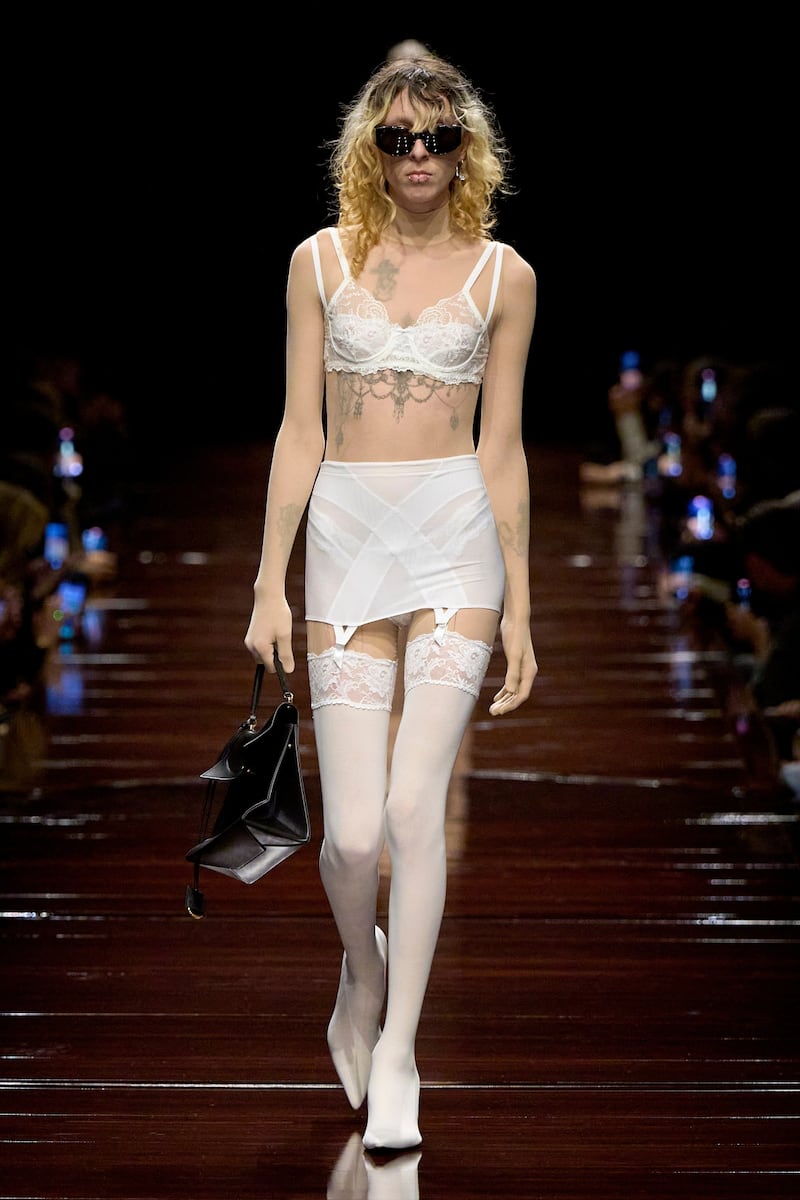
The problem is: disruption can turn into a new rulebook, so it was no surprise that over at Vetements Guram Gvasalia did once again what his brother Demna was doing at the label before bringing it all to Balenciaga. Brotherly love/hate aside, do we really need two brands that look exactly the same?
A textbook mentality popped up across Paris. In the space of just two seasons, Chemena Kamali has done a tremendous job in putting the magic back in Chloé, creating desire for the previously dormant label. Her work is sensitive and has retailers enthused, and yet the endeavor feels somehow formulaic, like ticking the boxes of what the Chloé woman is about and the pieces that she has to wear. This was Chemena’s second collection, and it felt particularly giddy and jolly. But now that she has laid strong foundations, it would be interesting to see her develop more personal ruminations on the brand.
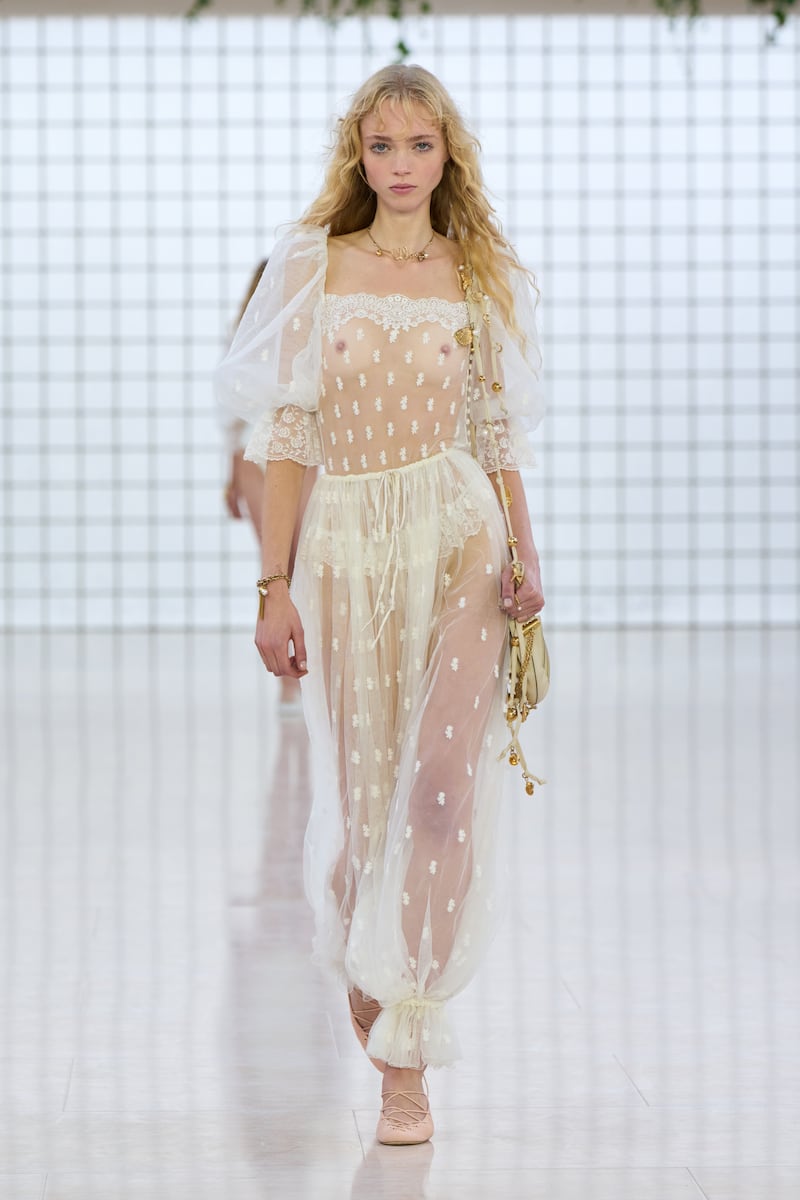
Over at Dries Van Noten, it was business as usual in the hands of the studio team, following Van Noten’s exit. The designer’s grand sense of catwalk spectacle was lacking, but the ease, the slouchiness, the arty mix of prints and colours were there, again feeling a bit formulaic and yet the collection’s slightly dirtier sensuality felt fresh. Meanwhile, the lack of a creative director was more evident at Chanel: the inoffensive collection of textbook pieces sorely needed a point of view and an edit.
McQueen’s Seán McGirr got the memo on upping his execution, but he took several steps back in terms of image, ditching the gritty take on the heritage he so poignantly devised last season in a return to the softer McQueen that was entirely his predecessor Sarah Burton’s creation. This about-turn, most likely imposed to meet the demands of the jet setting, Mayfair clientele that has become the brand’s customer base, was a huge disappointment, weakening one of the strongest identities in fashion-land.
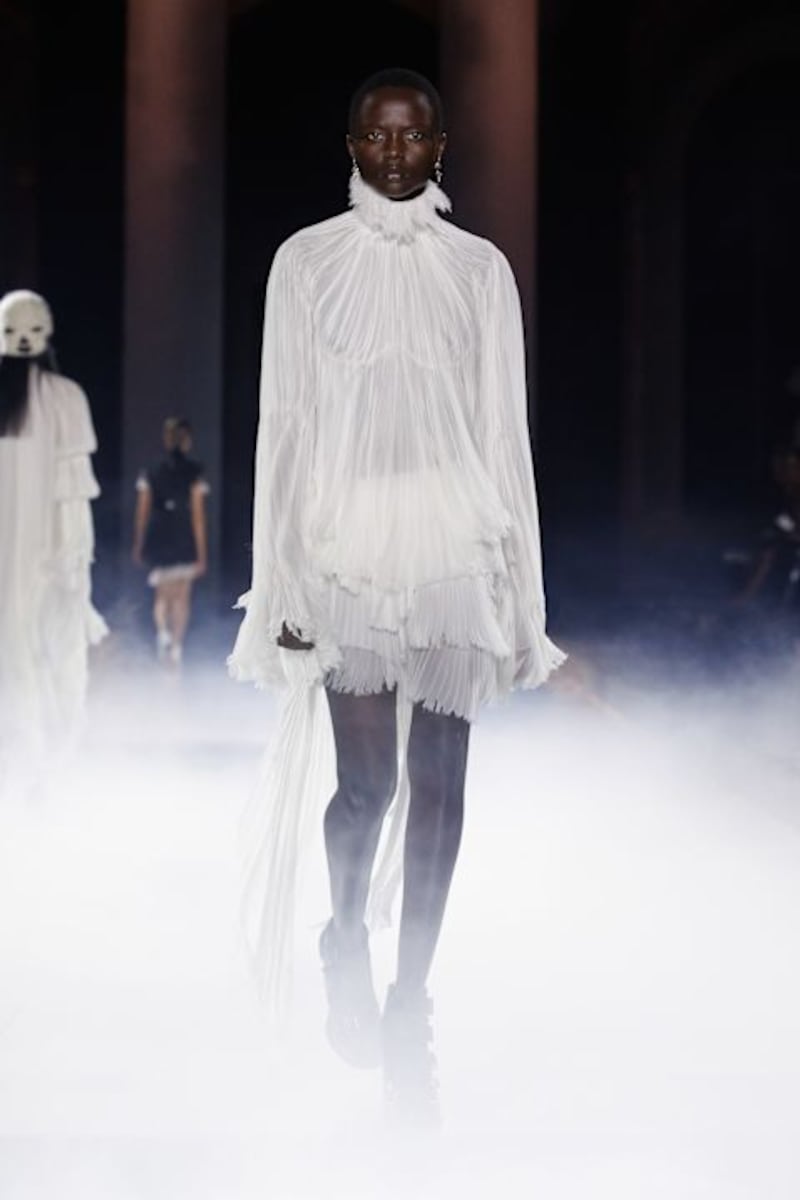
Nicolas Di Felice’s approach to the Courrèges archive is exemplary: rather than being a treasure trove for replicas, he sees it as a launching pad for new adventures in construction. This season the infinite loop of a Moebius strip triggered an exploration of looping forms in graphic black and white that was assured and forward-thinking, rather than nostalgic and pastiche. An equally focused palette was on display at Dior, but designer Maria Grazia Chiuri appeared to be suffering from creative fatigue as she re-visited her own archive of Ancient Greek draping and sharp tailoring that ultimately failed to say much.
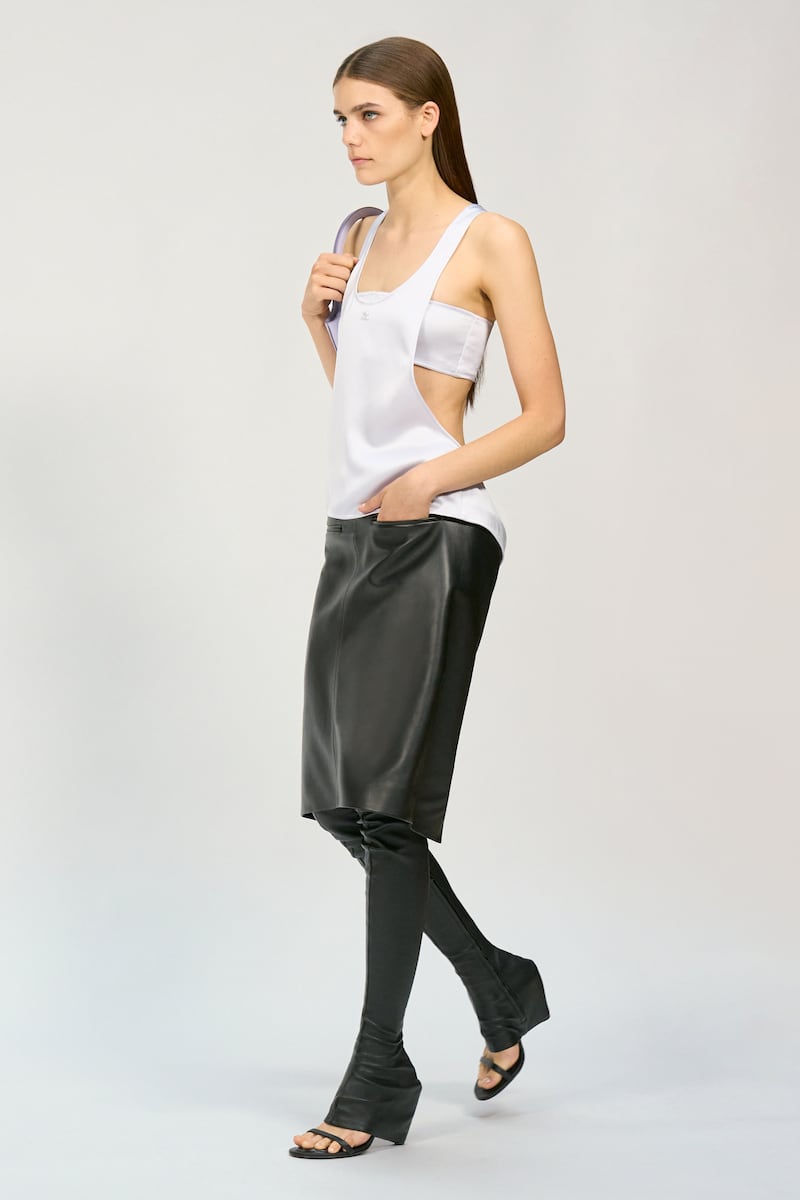
Over the last few years, Anthony Vaccarello has been on a mission to focus on specific Saint Laurent tropes or shapes — one collection at a time — with a dedication that can, at times, feel pedantic but always comes with a level of execution that’s enchanting. This season there were two opposing tropes: the she-man, in a suit and tie, and the ultra-femme, in sparkle and sumptuous colours. In other words, Yves himself and Lou Lou. It was all very gorgeous to look at — Vaccarello is a consummate showman with a magnificent sense of drama — but given the current state of the debate over feminine representation through clothes, parts of collection felt a little like cosplay.

Louis Vuitton, too, felt costumey: a regal fantasy with 1980s overtones and passing nods to both Yohji Yamamoto and Vivienne Westwood. And yet, one has to commend the level of dedication and care for detail Nicolas Ghesquière puts into every single outfit and his will to explore endless possibilities with craft.
Speaking of the way women are represented, this season it was a face-off between grown up sensuality and downright infantilism. Ever the provocateur, Miuccia Prada went right at the source at Miu Miu, collaborating with Petit Bateau on a range of children pieces resized for adults. Her stated aim, however, was not to infantilize women nor even to glorify youth, rather to explore the disruptive power of infancy as the moment of absolute truth, the time of life when ideals are uncorrupted and spontaneity rules. This made for an assemblage of pieces shaped by gestures — like children playing dress up with mom’s (and pop’s) bourgeois closet. It made for an energised outing that was more about styling than design. After all, it was Mrs. Prada who taught the world that it’s not what but how that truly matters.
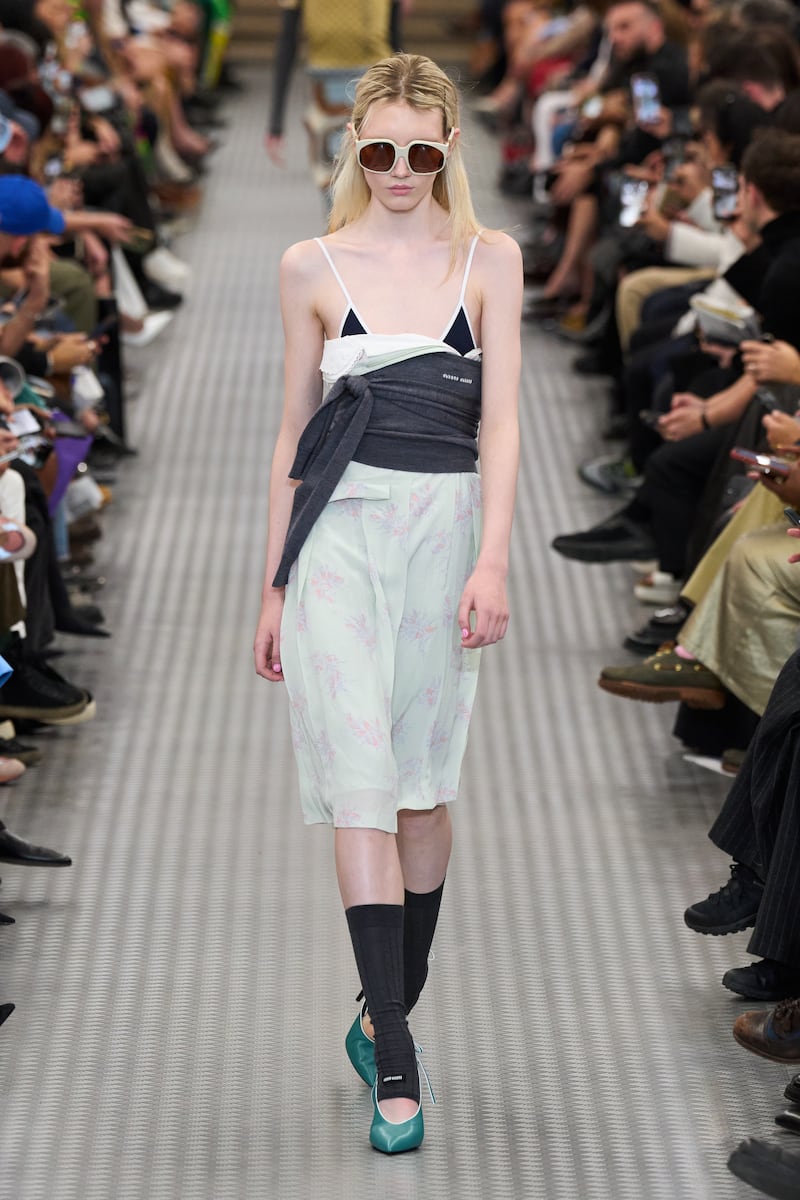
There was a fresh grace at Giambattista Valli, where the designer stayed away from anything too madame in favour of a new lightness that was brilliantly captured in the fluid draping, while at Hermès Nadège Vanhée managed to make transparencies look classy while turning the edge-factor up.
At Schiaparelli, surrealism was replaced by a brand of body-consciousness that, although charged with the heavy referentialism Daniel Roseberry is known for, felt like a welcome departure from the sensationalist language he has perfected in couture.
Liquefied draping — in an Issey Miyake kind of way — got mixed up with experimental tailoring over at Victoria Beckham, where her strenuous effort to be perceived as a serious fashion designer continues to crash into the problem of brand identity. The post-human sensibility championed by Duran Lantink through pieces that redesign the body is clearly indebted with the work of Rei Kawakubo and the costumes of Oskar Schlemmer, but it has also a sensuality that is all Lantink’s own, and captivating.
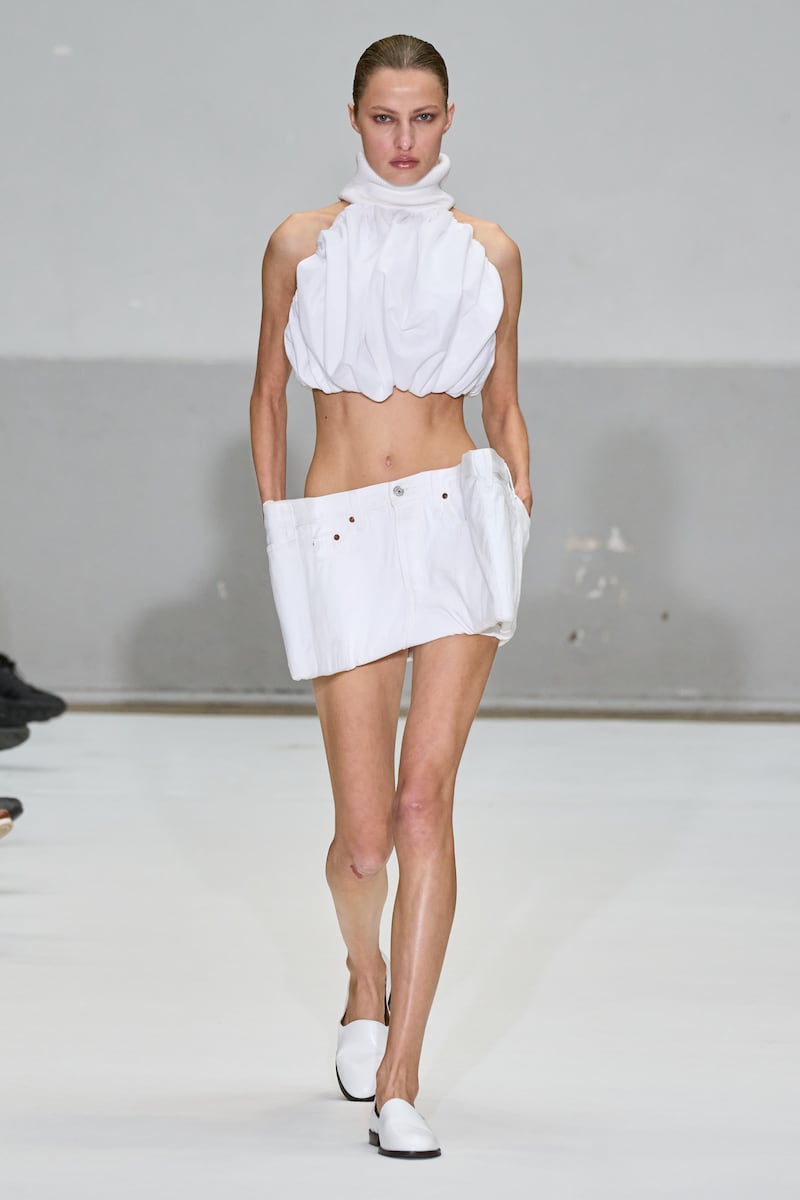
Speaking of Kawakubo, what is happening over at Comme des Garçons? For a start there is Rei’s will not to do clothing but sculpture — a rejection of the essence of her trade that feels stubborn, not to mention the fact that such outlandish creations, in real life, end up on the backs of some serious attention seekers, something that is at odds with Kawakubo’s ruminations.
Her acolytes Junya Watanabe and Kei Ninomiya, meanwhile, are possessed with an experimental drive and a will to push the boundaries in materiality that is enthralling, but that is somehow confined within the very Comme, very schoolgirl silhouette of small jacket, full skirt, big shoes that feels like a limitation. The other ageing Japanese master, Yohji Yamamoto, is instead continually focused on the craft of dress making, with a tenacity in exploring new ways of cutting and draping that feels elating. This season it was lampshade skirts and bits of lace and fluid red: new verses for the ongoing Yohji poem.
Fatigue is real, for some designers as well as consumers. Long creative tenures naturally lead to weariness. Both Olivier Rousteing and Julien Dossena have been in their positions, at Balmain and Rabanne respectively, for over a decade, and it shows. Rousteing cleaned up the act, but more than the Owens-esque tailoring, it was the soft liquid draping in the very finale that looked promising.
As for Dossena, going into sportier territory and exploring metal as lamination was a clever move, but the collection as a whole did not have much energy. Speaking of energy, it was strangely low at Rick Owens, too, where June’s all-white, peacefully militaristic and orderly parade of soldiers in the army of love gave way to a mostly black, unruly procession of beautiful freaks of all ages and sizes. The casting was extraordinary, but the nth celebration of the designer’s inclusive, anti-conformist spirit and the mining of his back-catalogue made things heavy. It might be time for Owens, too, to change format.

The Row might be read as rather formulaic, too, and sometimes a bit heavy in its referencing — Yohji and Jil Sander in their 1990s heyday are ever present in the designers’ mindscape — but what the Olsen twins excel at is creating a whole world of desirability around their work, making deprivation, in an age of abundance, the ultimate luxury — one that only those who have everything can appreciate.
Big volumes were everywhere, still. Fashion’s inability to move away from gigantic shoulders and everything oversize is clear. Albeit trite, the trend produced some poignant interpretations that ranged from Carven’s humongous slip dresses and deconstructed take on ladylike — Louise Trotter keeps approaching the house’s codes with a poetic sensitivity and a modernist slant that are on point — to Stella McCartney’s slouchy tailoring.
At Uma Wang, the goings got solemn and sculptural, while Niccoló Pasqualetti mixed the hard and the ethereal in the dreamy take on dressing that is his signature. Rokh’s exploration of slashed tailoring and rose was a joy to look at. And at Sacai, Chitose Abe mixed couture shapes reminiscent of the 1960s with the sleek urban toughness she favours, and when the encounter found a balance, it was convincing.
The inveterate master of volume, or better of MA, the space that separates body and dress, is Satoshi Kondo, whose take on Issey Miyake is frankly masterful. Even when he looks back at the archives — this season it was the liquid draping of colombe, and the tribal futurism captured by Irving Penn — Kondo does it not out of nostalgia, but with a forward looking mentality, which is a most Miyake-like quality.
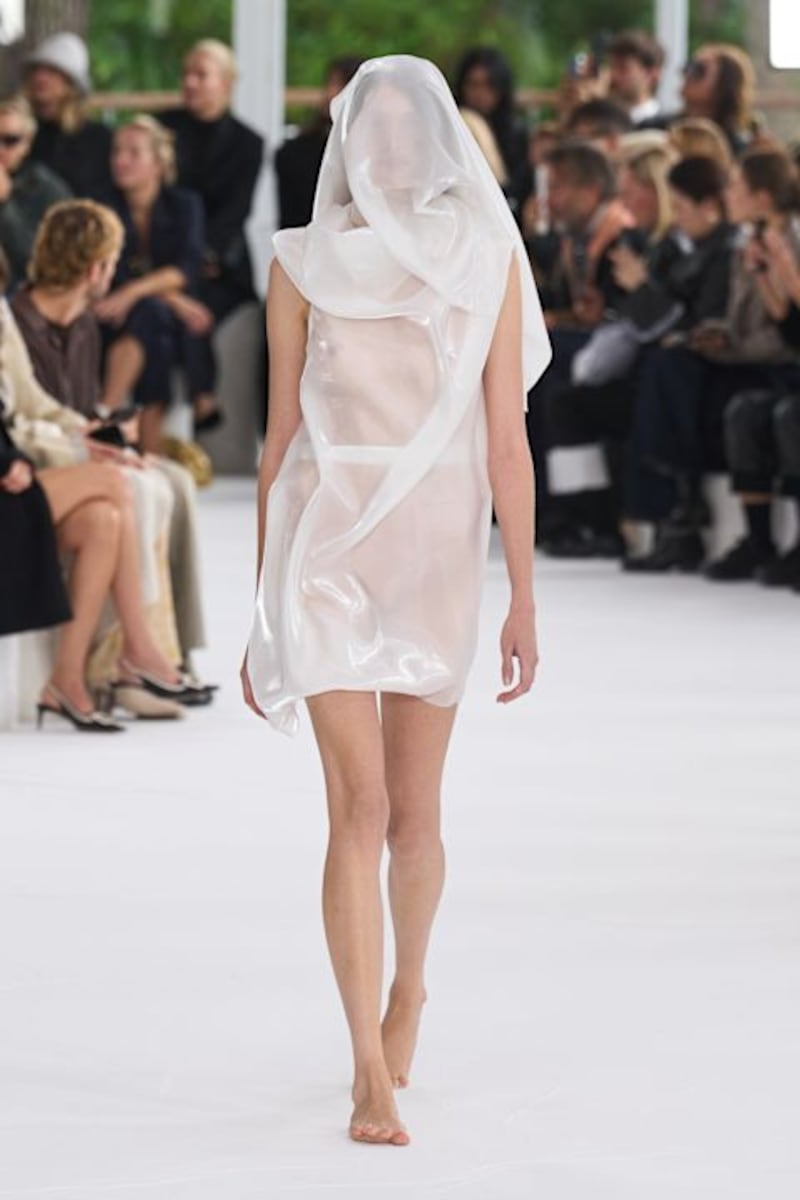
At Ann Demeulemeester, Stefano Gallici ditched reverence for the archive, unafraid to displease Demeulemeester’s old client base but happy to welcome a new one, younger in spirit, if not age. There was a bohemian layering of textures and lines in the collection that, mixed with the trademark slouchy tailoring, recontextualised the Demeulemeester vocabulary. Gabriela Hearst, meanwhile, charged minimalist lines with hints of rodeo kitsch, but the results were not always convincing.
In a season of fear, the winners were those who showed no fear in stripping things down and reducing. After seasons of extreme theatrics, Casey Cadwallader opted for an atelier-like presentation and a concise collection of just a handful of pieces at Mugler, and scored, the chiselled shape of his hourglass dresses a thing of beauty. The lasting impression of the week, however, and a eerily elating one: the glaring vastness of the Loewe venue — a tall and thin metal pole at its centre with a little bird perched on top, watching the crowd or ready to fly — and the grace of the robes de style and the impalpable silhouettes that filled it, moving away from the body, touching it like halos, dancing around.

Jonathan Anderson was in a state of grace and in the most simple and effective of ways demonstrated that less is truly more: more inventive, more poetic, more daring. Fashion needs more of this less.


